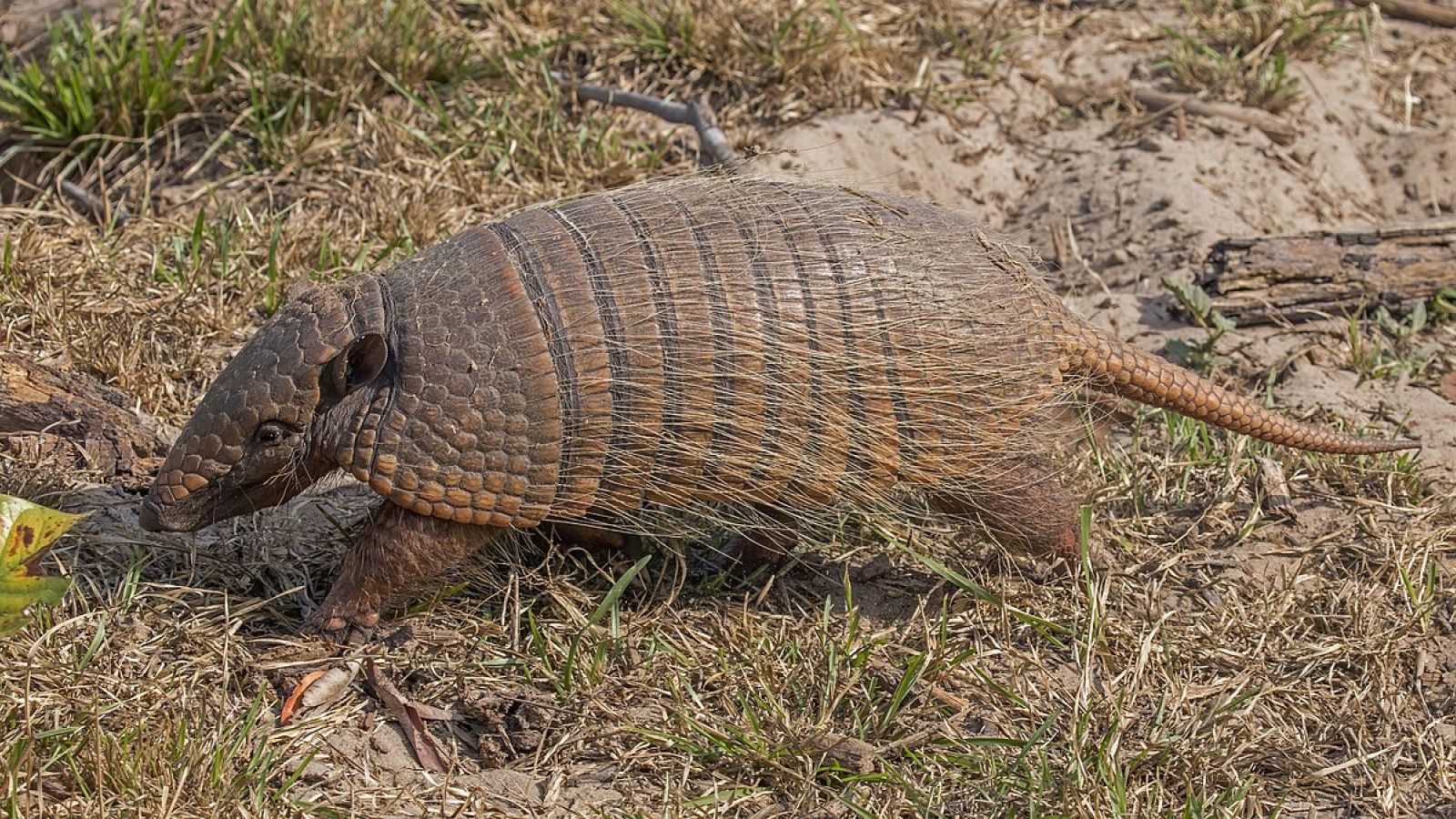Image Charles J. Sharp https://commons.wikimedia.org/wiki/File:Six-banded_armadillo_(Euphractus_sexcinctus).JPG
The Nine-banded armadillo (Dasypus novemcinctus) belongs to the family Dasypodidae and most commonly found in the Americas. Despite their name, nine-banded armadillos can have 7 to 11 bands on their armour. They are about 2.5 feet/ 0.7 meters long, measuring from the nose to the tip of their tail. They have an average weight to 5kg or 12 pounds. Most of their diet consists of invertebrates such as cockroaches, scorpions, small reptiles, eggs of other mammals, and birds. Some, but very little of their diet, in fact 10 percent, is made up of plant derived matter such as seeds and fruits. Over 350 years of scientific research on armadillos has been documented with the 9 banded being the most common species used in research.
Why are they used in research?
The way nine banded armadillos reproduce is quite unusual. When the females give birth, they can produce up to four genetically identical babies at once.
Therefore, scientists researching reproduction and multiple births find these armadillos to be a very important to their research. The sameness of the babies produced have also been useful in drug studies. Since the genetics of the sibling armadillos are the same, that means the differences that researchers see in the response to a drug is due to the drug, and not any variation in the genes of the armadillos.
Armadillos’ low body temperature also makes them great animal models for research in leprosy. Studies into the leprosy and how it progresses in the body have been difficult due to the ethical and practical barriers of getting samples from patients with leprosy after they have died.
What type of research are armadillos used in?
Leprosy
Armadillos are very useful in leprosy research because they provide an animals model of the disease. The leprosy bacterium needs the hosts cells to grow and therefore, scientists have found it very difficult to grow and study the bacteria alone in the laboratory. Other animals that are often used to study other conditions, such as rats, rabbits and guinea pigs have been used in leprosy research, but scientists have often found that they are resistant to the bacteria and therefore do not make good models. When infected with leprosy, armadillos show similar disease progression and symptoms as those in humans.
Vaccines based on antigens from M.Leprae are still undergoing trials, most recently in India. The vaccine, based on Mycobacterium indicus pranii (MIP), will be administered as a preventive measure for people living in close contact with those already infected by the leprosy bacteria.
Multiple births and reproductive issues
Armadillos have been used in fertility and embryology studies. A study from the 1960s used the multiple births trait in armadillos to study how mammals inherit their genes. The use of armadillos in this study helped the researchers to learn more about the genetics of single celled organisms and the inheritance pattern of identical human twins. Since then, armadillos have continued to be used in embryology studies involving twins and implantation studies.
How are they looked after?
Armadillos are medium sized mammals and can be housed in laboratories that are capable of housing others of a similar size. Typically, modified rabbit cages with soft plastic flooring inserts and shredded paper that functions as a mock burrow and enriches the environment are used.
References
Nine-Banded Armadillo: https://www.nwf.org/Educational-Resources/Wildlife-Guide/Mammals/Nine-Banded-Armadillo
Armadillo diet:
Armadillos in research
The armadillo: a model for the neuropathy of leprosy and potentially other neurodegenerative diseases: https://dmm.biologists.org/content/6/1/19
Expression and characterization of recombinant interferon gamma (IFN-gamma) from the nine-banded armadillo (Dasypus novemcinctus) and its effect on Mycobacterium leprae-infected macrophages: https://pubmed.ncbi.nlm.nih.gov/18558493/
A study of monozygous quadruplet armadillos in relation to mammalian inheritance: https://doi.org/10.1073/pnas.60.3.910
Read more:




